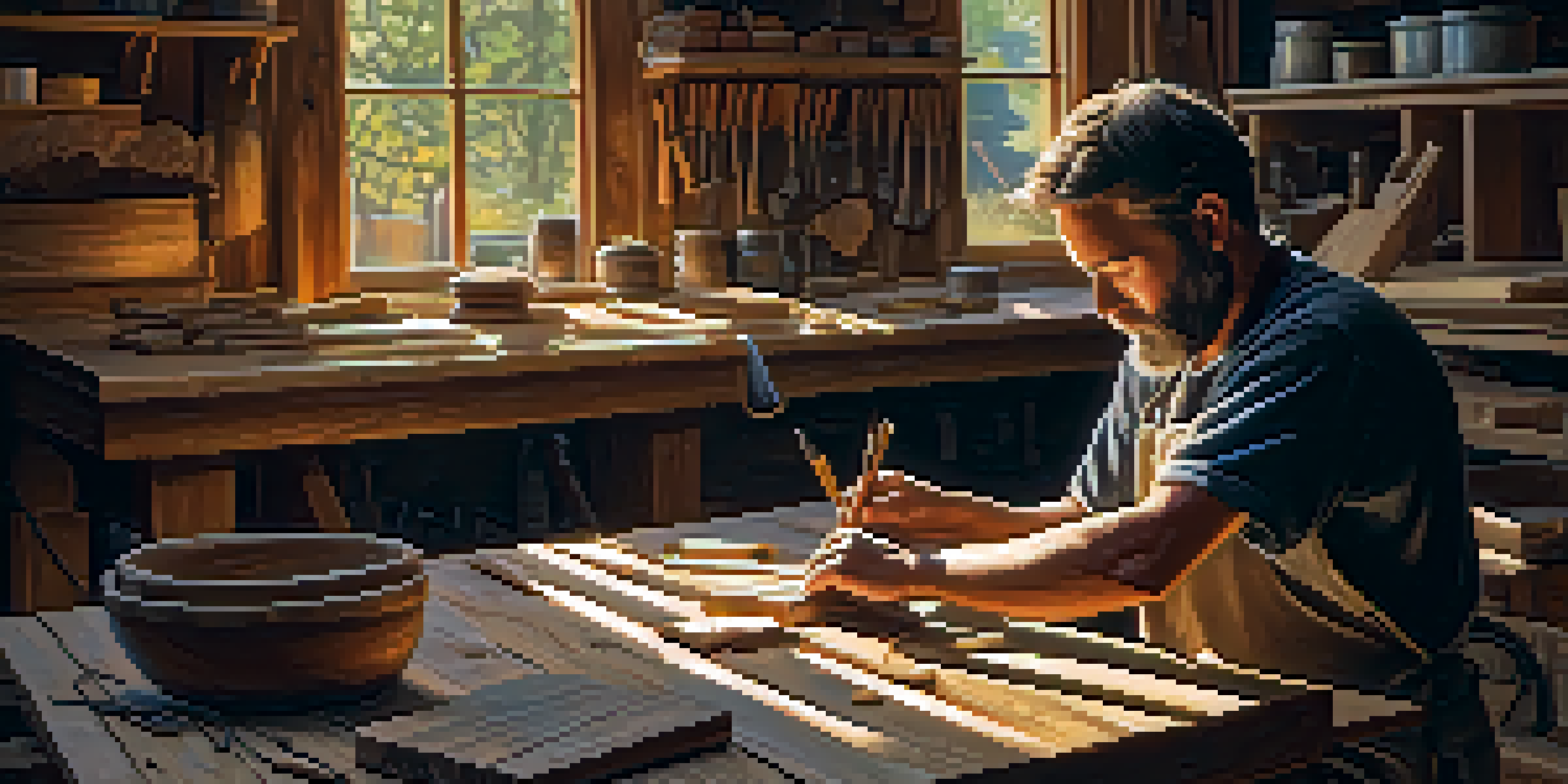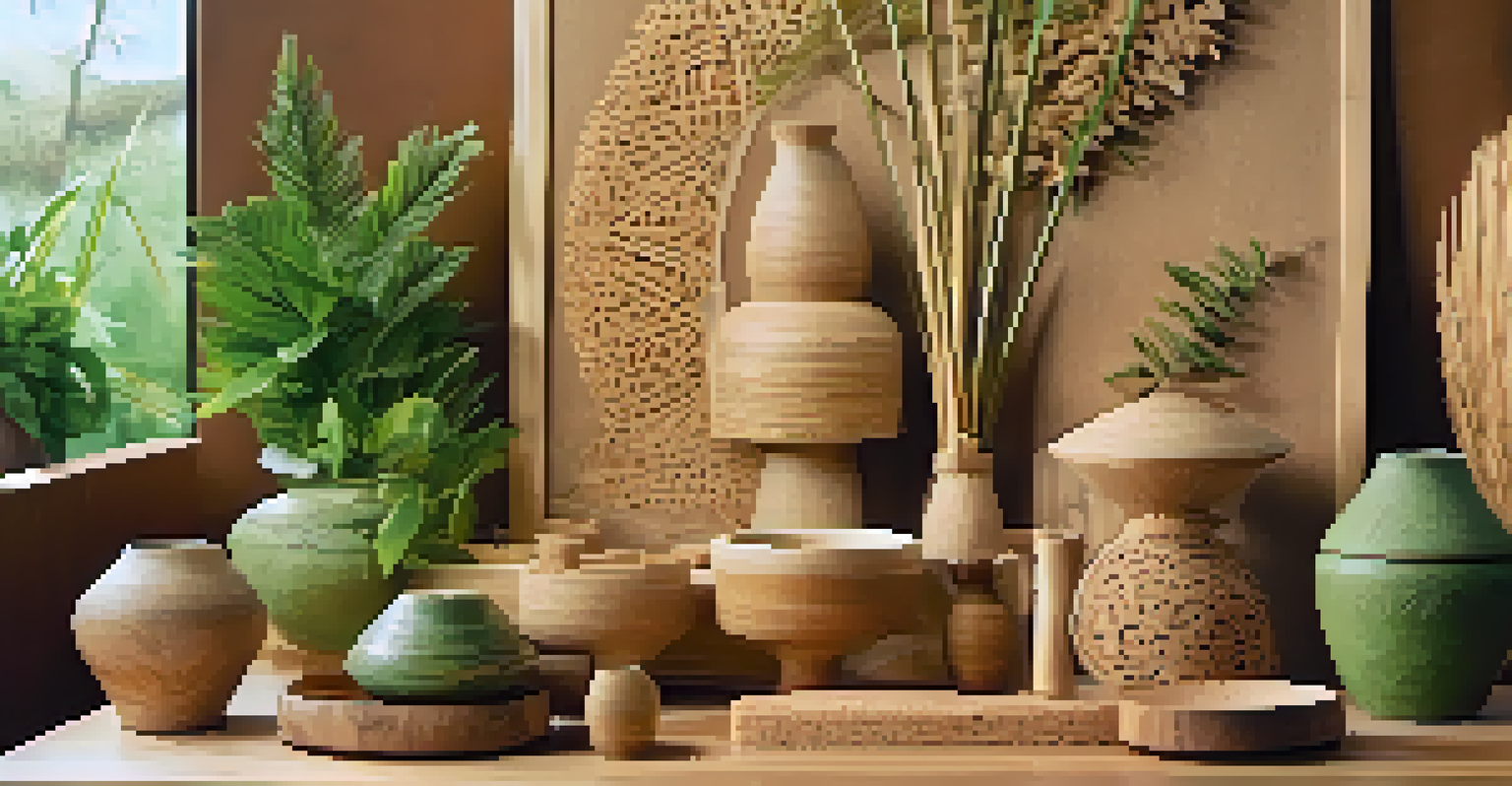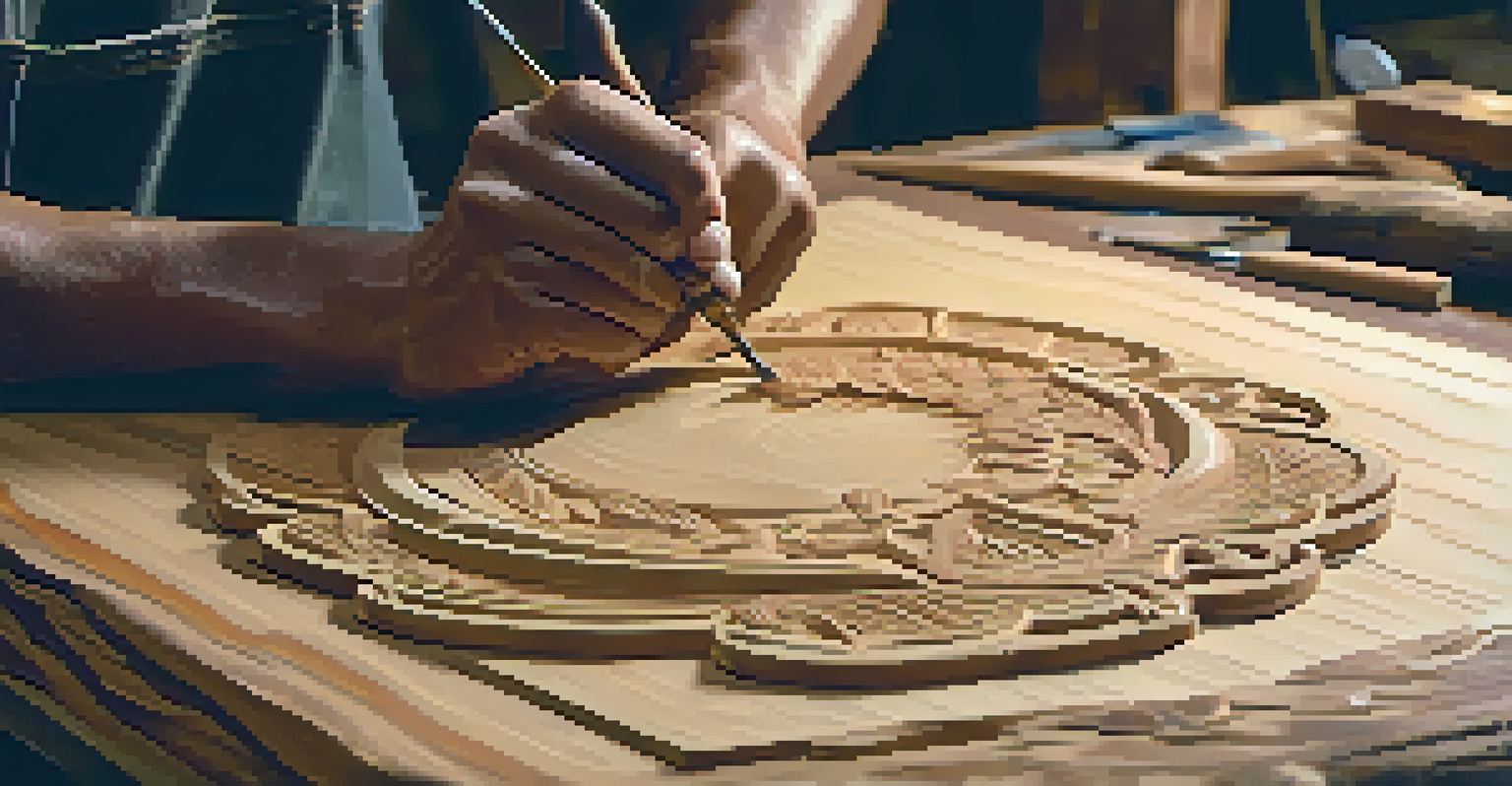Sustainable Carving: Eco-Friendly Materials and Methods

Understanding Sustainable Carving and Its Importance
Sustainable carving refers to the practice of creating art and objects using methods that do not harm the environment. This approach emphasizes the use of materials that are renewable, recyclable, or biodegradable. With the growing awareness of environmental issues, many artisans are shifting towards sustainable practices to reduce their carbon footprint and preserve natural resources.
The greatest threat to our planet is the belief that someone else will save it.
The importance of sustainable carving cannot be overstated. As consumers become more conscious of their choices, they seek products that reflect their values, including environmental responsibility. By opting for eco-friendly carving, artists not only contribute to a healthier planet but also attract a clientele that values sustainability.
Moreover, sustainable carving allows artisans to connect with nature in a deeper way. It encourages creativity in using alternative materials and methods, fostering innovation while promoting environmental stewardship. In this section, we’ll explore various eco-friendly materials and techniques that can be employed in sustainable carving.
Eco-Friendly Materials for Carving Projects
When it comes to sustainable carving, the choice of materials is critical. Reclaimed wood is a popular option, as it repurposes existing timber that might otherwise go to waste. This not only reduces the demand for new resources but also adds character to the finished piece, as each reclaimed item has its unique history.

Bamboo is another fantastic material for carving due to its rapid growth and renewability. As a grass, bamboo can be harvested sustainably without causing harm to the environment. Its lightweight and sturdy nature makes it an ideal choice for various carving projects, from intricate sculptures to functional items.
Sustainable Carving Benefits the Planet
Adopting sustainable carving practices helps artists reduce their environmental impact while appealing to eco-conscious consumers.
Additionally, consider using biodegradable materials like cork or natural fibers such as hemp and jute. These materials break down naturally when disposed of, reducing landfill waste. By choosing eco-friendly materials, carvers not only create beautiful art but also play a role in protecting the planet.
Tools for Sustainable Carving: What to Use
The tools used in sustainable carving can also impact the environmental footprint of the craft. Opting for hand tools rather than power tools minimizes energy consumption and noise pollution. Tools like chisels, knives, and gouges allow for precision and control, making them ideal for detailed work.
Sustainability is not a destination, but a journey. It is about making decisions that are good for the planet, the people, and the economy.
When selecting tools, consider those made from sustainable materials, such as wooden handles or recycled metals. These choices further support the eco-friendly ethos of sustainable carving. Additionally, maintaining and caring for these tools extends their lifespan, reducing the need for replacements.
It's also wise to invest in high-quality tools that can withstand wear and tear. A well-made tool not only performs better but also reduces waste over time. By being mindful of tool selection and maintenance, carvers can align their practices with sustainable principles.
Techniques for Eco-Friendly Carving
Sustainable carving techniques can vary widely, but many emphasize skill and craftsmanship over speed. Techniques like whittling, which involves removing thin shavings from wood, allow for detailed work without the need for harsh chemicals or finishes. This method promotes a deeper connection with the material.
Another technique is relief carving, where designs are carved into the surface of the material, maintaining much of the original shape. This method not only conserves resources but also showcases the natural beauty of the material. By highlighting the unique characteristics of the wood or other materials, artists can create stunning pieces that tell a story.
Eco-Friendly Materials Enhance Art
Using materials like reclaimed wood and bamboo not only promotes sustainability but also adds unique character to carved pieces.
Additionally, artists can explore the use of non-toxic finishes and paints made from natural ingredients. These products not only protect the artwork but also ensure that harmful chemicals do not leach into the environment. By adopting eco-friendly techniques, carvers reinforce their commitment to sustainability.
The Role of Local Sourcing in Sustainability
Local sourcing of materials is a vital aspect of sustainable carving. By obtaining wood, stone, or other materials from local suppliers, artisans reduce the carbon emissions associated with transportation. This practice supports local economies and fosters a sense of community among artists and suppliers.
Moreover, local sourcing encourages the use of native materials, which are often more sustainable than imported options. Native woods, for example, are adapted to the local environment and require less energy for cultivation. This not only benefits the environment but also keeps the craftsmanship rooted in local traditions.
By prioritizing local resources, carvers can create works that reflect their region’s culture and heritage. This adds an extra layer of meaning to each piece, connecting the artwork to the land and its stories. In essence, local sourcing is a win-win for both the artist and the planet.
Incorporating Upcycling into Carving Projects
Upcycling is the process of transforming waste materials into new products, and it fits seamlessly into the world of sustainable carving. By using discarded items like old furniture or broken tools, artists can breathe new life into materials that would otherwise end up in landfills. This can lead to unique and innovative designs that stand out in the marketplace.
For example, a carver might take an old wooden chair and repurpose the wood into a stunning sculpture. This not only reduces waste but also tells a story about the object's past, adding depth to the new creation. Upcycling encourages creativity and resourcefulness, pushing artists to think outside the box.
Local Sourcing Supports Sustainability
Sourcing materials locally minimizes transportation emissions and connects artisans with their community and cultural heritage.
Incorporating upcycled materials can also resonate with consumers who value sustainability. These pieces often carry a narrative that appeals to eco-conscious buyers, making them more likely to invest in the work. Ultimately, upcycling in carving projects enhances both the artistic process and the environmental impact.
The Future of Sustainable Carving
As environmental concerns continue to rise, the future of sustainable carving looks promising. Artists are increasingly recognizing their responsibility to protect the planet and are actively seeking out eco-friendly practices. This shift is not just about materials; it encompasses a broader understanding of sustainability in the artistic process.
Moreover, with advancements in technology, new materials and methods are emerging that support sustainable carving. Innovations like 3D printing with biodegradable materials or the use of sustainably sourced composites can open up new avenues for creativity. These developments allow artists to push the boundaries of traditional carving while maintaining their commitment to sustainability.

Ultimately, the future of sustainable carving is about balance—finding ways to create beautiful art while honoring the environment. As more artists embrace these ideals, we can expect to see a vibrant community dedicated to eco-friendly practices, inspiring others to follow suit and contribute to a more sustainable world.